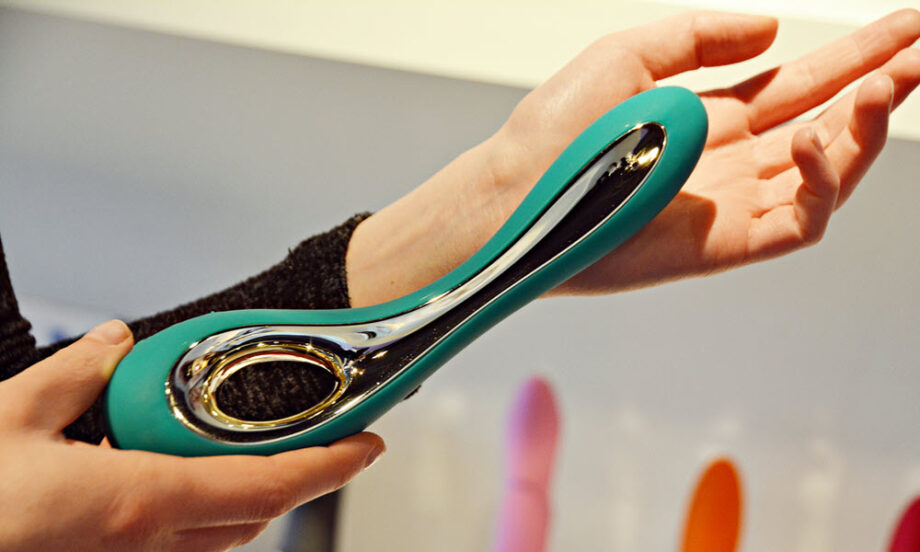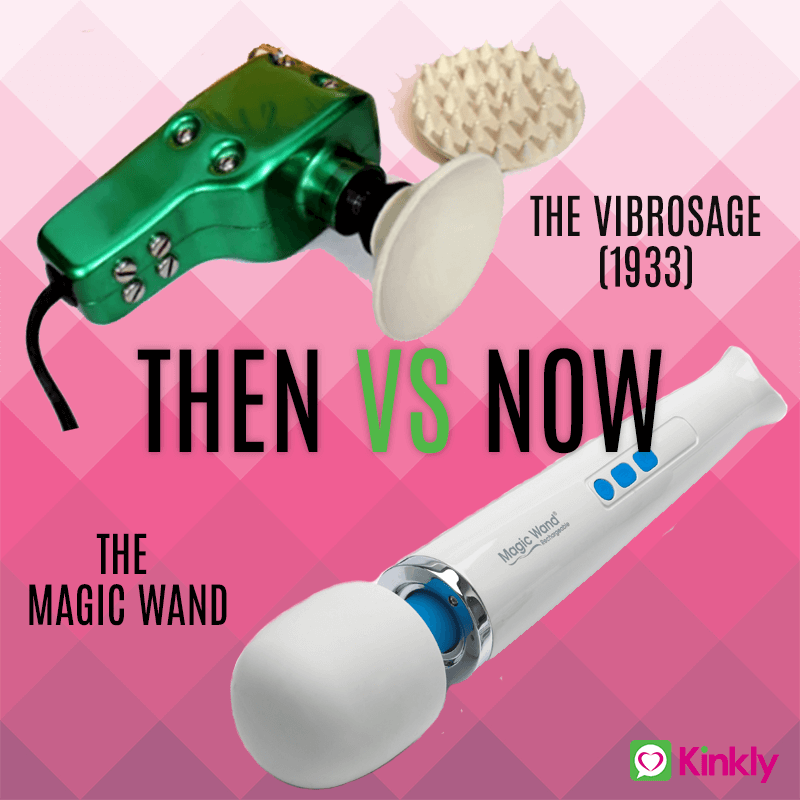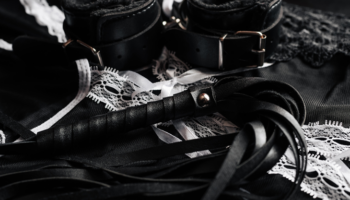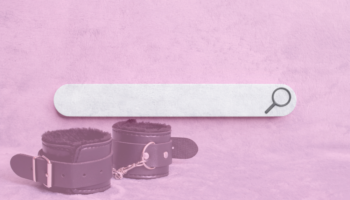When anti-terrorist experts descended on a post office in northwest Russia in March 2011, they expected the day’s work to involve dismantling a bomb. Instead, when they carefully took apart the ticking package at Petrozavodsk, what they found was a vibrator.
It sounds like a joke, but this was hardly the first time a bomb squad had been called to investigate a package that turned out to have much less explosive - but apparently still newsworthy - contents.
But maybe we shouldn’t be surprised. Vibrators are experiencing a bit of an explosion of their own these days. Once relegated to shuttered, back alley sex shops, they've officially found their way into retail stores, pharmacies, lingerie shops and even high-end electronics outlets. Or, more precisely, they’re finding their way back there after a long reprieve. This isn’t the first time people could pick up a sex toy easily and with little embarrassment. But, boy, has it been a long time.
A 2009 research paper published in the Journal of Sexual Medicine found that more than 52 percent of American woman had used a vibrator. Still, their relatively sudden appearance at Walmart only a few years ago is surprising when you consider that the sale of such products was illegal in several U.S. states, and still is, officially, in Alabama to this day.
Here we’ll take a look at the history of the vibrator, and why these little babies are getting more buzz than ever. (Check out some vibrator reviews here.) When you look at today’s sleek, sophisticated vibrating toys, it’s hard to imagine the whole industry started with steam-powered "massage machines." Sure, they were as big as a dining room table and someone had to shovel coal into them from another room, but they provided huge relief for doctors who’d been providing manual (yes, you read that right) stimulation to their female patients - something many of them said took at least an hour to complete. Now, if you’re wondering why Victorian-era doctors were providing happy endings to women, this is where things get even more interesting - and it’s exactly how vibrators managed to progress for years as personal massagers used for female health and wellness. Because while doctors - and probably everyone else - were well aware of how women used them, they didn’t believe their patients’ reaction to the treatment was at all sexual. (Or at least that’s their story and they’re sticking to it!) In fact, vibration, or "pelvic massage," was considered a valid form of treatment for "hysteria," a female malady that is no longer recognized. In any case, the "hysterical paroxysm" the vibrating treatment produced was believed to provide relief from many symptoms, which ranged from insomnia to nervousness. What was clear is vibrators made women feel better, and they often returned for more treatment.
It wasn’t long before mechanical (read hand-cranked) and electrical vibrators were developed for ladies’ home use. And while they were large, heavy, medieval looking things, they seemed to do the trick, because ladies rushed out to buy them in droves, leading the vibrator to become the fifth electrical appliance to be introduced into the home (following mundane household items like the teakettle, sewing machine, fan and toaster).
And maybe that’s how it should’ve been; people buying something they enjoyed in the comfort of their homes without hassle or embarrassment. But, although it started that way, it didn’t end that way.
We have to imagine that women must have had some inkling that their massaging exploits were of a sexual nature - and perhaps their husbands did as well. The problem was keeping that little secret under wraps, because if there’s anything the world wasn’t ready for in the early 1900s, it was female sexuality - especially the kind that didn’t involve a man.
When vibrators appeared in pornography in the 1920s or so, the jig was up, and "personal massagers," which up to that point could be purchased anywhere by anyone, disappeared from store shelves. By the time the Great Depression came around, sales of all electrical appliances dropped, and the metal used to make them was diverted for use in World War II. Things were pretty quiet on the vibrator front for a while - quiet, maybe, but business was ... buzzing ... all the same. There’s some evidence that electric toothbrush sales increased in response to the removal of vibrators from the market, to the point where some doctors were left wondering if vibration itself had health-inducing qualities. So, in the 1950s, a whole lot of other vibrating products began being marketed to women as "massagers" or "spot reducers." These handheld massagers were advertised for weight loss, increased energy and a better, more youthful appearance. Based on the wide range of models and manufacturers that made these items, they were big sellers. And the best part was, women could buy them without reproach, and use them, as one ad said, "in the privacy of their own homes."
By the 1960s, the vibrator was back in action as a sex toy, as prominent feminists made them a symbol of female sexuality. They also got some buzz thanks to the publication of best-selling sex manual, "The Joy of Sex," which devoted plenty of text to female pleasure - and how a woman could achieve it on her own.
By the 1980s, vibrators were flying off the shelves once again. But there was still one more shake-up for this old favorite. Since the 1980s, the vibrator has continued to have an increasingly prominent place in pop culture - and in women's home and lives. This new kind of popularity - which many believe started with the introduction of "the rabbit" on "Sex in the City" in 1998 - transcends the gaudy neon dildos that have stood as the hallmark of the sex toy industry for years. It's also one reason why we now see sex toys in regular retail stores again.
The release of "Fifty Shades of Grey," an erotic novel by E.L. James in which sex toys play a starring role, may have put this growing trend over the edge. In the wake of its release, many manufacturers reported record sales, especially of items featured in its pages. Some say the book unleashed a sleeping giant, and that the widespread popularity and acceptance of the book has helped many women move away from being ashamed of erotica. (Looking for new erotica reads? Check out 5 Books That Will Make You Forget About "Fifty Shades of Grey.")
Whatever "Fifty Shades" tapped into, it started a marketing mania, one with many new toys that are putting function ahead of, well, form. They're sleek, often beautiful, devices - buzzworthy baubles rather than crude anatomical copies. In fact, they're a lot more like the approachable, everyday devices women purchased in the early part of the century. And, perhaps thanks in part to pioneers like "Sex in the City" and "Fifty Shades," people increasingly feel comfortable buying, owning and even talking about them.
In 2017, the sex toy industry was worth $23.7 billion per year, a number that's expected to climb to $35.5 billion by 2023. That includes a wide range of products, but the most popular item, by far, is the vibrator. What started as a medical treatment for women’s "hysteria" has become both an industry and a new paradigm - one where female sexuality isn’t such a dirty word. That shift has made vibrators and other sex toys bigger than ever. But there's one thing that hasn’t changed. The 2009 study on vibrator use found that the 52 percent of women who used a vibrator tended to be physically and psychologically healthier than those who didn’t. Maybe those Victorian-era doctors were on to something aver all. Now how’s that for buzz?
Tara Struyk is a co-founder and the editor-in-chief of Kinkly.com. She’s a content creation and management executive with 15 years of experience working in online media. As a writer, her work has appeared in dozens of publications, including Forbes, Glamour, MensHealth and Investopedia.
Tara is currently the VP of Content at Janalta.com, where she leads the editorial department and directs content production for a diverse portfolio of websites in niche verticals. She has launched several sites from the ground up, and has experience managing sites from pre-launch all the way to maturity. She has deep experience in online analytics, SEO optimization, content marketing and editorial direction.
Tara graduated with degrees in English and Journalism from West Virginia University in 2005. She began her career as an editor at Investopedia and worked for several years in the financial media space. She co-founded Kinkly in 2012.
Tara is also an accomplished distance runner, devoted rock climber and obsessive reader.





